|
It's time to write about
the heroes of our essay: Down To
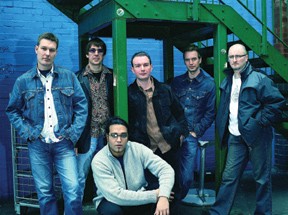 The
Bone. DTTB is the production team of Stuart Wade and Chris
Morgans. Keyboards come from Neil Angilley, while Paul "Shilts"
Weimar provides the tenor and alto saxes. Paul Turner (bass),
Adrian Revell (alto and baritone sax, flute), and Tony Remy
(guitar) also contribute to the mix. The album also features
Satin Singh (percussion), Simon T. Bramley (bass), Ian Crabtree
(guitar), and Gota Yashiki (drums). The
Bone. DTTB is the production team of Stuart Wade and Chris
Morgans. Keyboards come from Neil Angilley, while Paul "Shilts"
Weimar provides the tenor and alto saxes. Paul Turner (bass),
Adrian Revell (alto and baritone sax, flute), and Tony Remy
(guitar) also contribute to the mix. The album also features
Satin Singh (percussion), Simon T. Bramley (bass), Ian Crabtree
(guitar), and Gota Yashiki (drums).
Stuart
Wade expresses:
"Down To The Bone's aim was to try and inject more energy into the type of jazz music that is so badly stereotyped and give it a much funkier sound.
A lot of jazz players had a great vibe in the '60s, '70s, and
'80s, but somewhere along the way, I feel they've lost what
they had. The sound has been mellowed out with this whole easy
listening sound. For me, that's not what it's about. It's
about a feeling within the music and combining it with a good
groove. I want to let people know that it can still be done
and that there are people doing it."
The
overwhelming success of this group is visible: 4 top ten hits at
R & R charts, 1999, The Billboard Magazine elected them as
#1 top selling artist in 1999, #2 in the National Jazz Billboard
charts for their first album "From Manhattan to
Staten". Smooth Jazz News writes a comprehensive and very
informative cover story in the May 2002 issue about "Down
To The Bone - The Definition of Groove". A contract
with GRP Records and the first release on this label with their
fourth album "Crazy
Vibes and Things" will deliver the support of a major
label. What makes their music so attractive and irresistible?
"For me, it all
starts with the groove. That's what gets it all going,"
confides Stuart Wade, the
musical mastermind behind Down To The Bone. "Everything I
do revolves around the groove - that really is the most
important thing. That is what gets people dancing, their toes
tapping and the heads nodding. Without that groove, you haven't
got their attention. The melodies are the icing on the
cake."
A conclusive concept and
a consistent realization. The 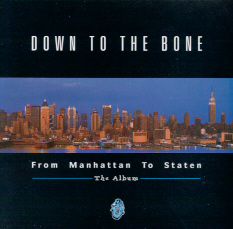 uptempo
grooving rhythm is the dominant factor (remember the
shuffle-effect?), the main-theme is repetitive and above all
jazzy improvisation. All tracks are uptempo dance grooves
pushing and bumping. The success-story starts with the first
album "From Manhattan To Staten", which was released
in 1996 (UK) and uptempo
grooving rhythm is the dominant factor (remember the
shuffle-effect?), the main-theme is repetitive and above all
jazzy improvisation. All tracks are uptempo dance grooves
pushing and bumping. The success-story starts with the first
album "From Manhattan To Staten", which was released
in 1996 (UK) and 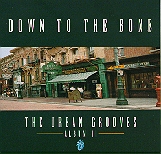 2000
(USA). The album grew to a success in UK before it find the jump
over the ocean. But the feedback was overwhelming. 2000
(USA). The album grew to a success in UK before it find the jump
over the ocean. But the feedback was overwhelming.
The next album released
"The Urban Grooves" was released in Jan. 1998 (UK) 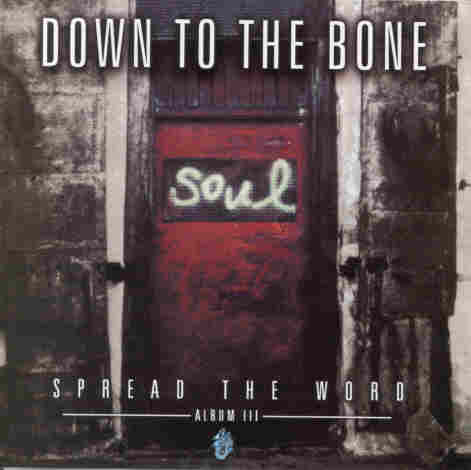 and
1999 (USA). DTTB used the same succesful receipt: "Replace
the smooth with the groove!" The crowd cried for more and
hadn' t long to wait: "Spread The Word" was released
in Jan. 2000 (UK) and 2001 (USA). Imagine, what effect for the
Americans: and
1999 (USA). DTTB used the same succesful receipt: "Replace
the smooth with the groove!" The crowd cried for more and
hadn' t long to wait: "Spread The Word" was released
in Jan. 2000 (UK) and 2001 (USA). Imagine, what effect for the
Americans: 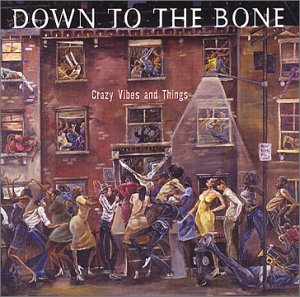 Three
albums in a row in between 2 years. DTTB's music was played on many Smooth
Jazz radio stations in USA. Internal
Bass felt bound to declare, DTTB is not Smooth Jazz. Three
albums in a row in between 2 years. DTTB's music was played on many Smooth
Jazz radio stations in USA. Internal
Bass felt bound to declare, DTTB is not Smooth Jazz.
"Crazy
Vibes and Things", the fourth album was released on GRP
Records at May 21st 2002. The story goes on. Now with the
promotion and distribution power of a major label the success is
guaranteed. We can observe the typical Paul-Hardcastle-syndrome:
DTTB copies their own style on every album.
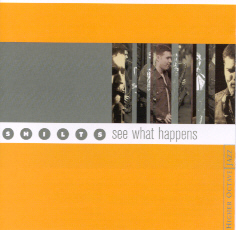 Paul
"Shilts" Weimar, the saxophonist and frontman of
the group, member of DTTB since their second album, already
startet a solo project "Shilts - See What Happens",
which was released on the Soulstis label and licensed to Higher
Octave Music (2001). The sax is naturally the main instrument on
this album, which presents more Smooth than Acid Jazz. The album
was produced by Shilts and Mick Wilson. Paul
"Shilts" Weimar, the saxophonist and frontman of
the group, member of DTTB since their second album, already
startet a solo project "Shilts - See What Happens",
which was released on the Soulstis label and licensed to Higher
Octave Music (2001). The sax is naturally the main instrument on
this album, which presents more Smooth than Acid Jazz. The album
was produced by Shilts and Mick Wilson.
Stuart
Wade and Chris Morgans
had
founded the Internal Bass label to sell their DTTB music. After
the tremendous reaction the label changed his web appearance and
offers now http://www.urbangrooves.net/.
For those which cannot get enough: Check out the "Boneshakers
Vol. I - IV". This is acid jazz in the DTTB style, very dynamic
and dancable. But be quick: These albums will be soon sold out!
I have asked
Stuart Wade about Acid Jazz and Smooth Jazz:
- Is Acid Jazz still alive?
The Acid Jazz label has just restarted his website.
- Is there still a Acid
Jazz scene in London?
- What do you think about
the term Smooth Acid Jazz?
- Is Acid Jazz a
refreshement for Smooth Jazz?
- Have your albums some
influence on the contemporary jazz music of today?
Here his
comprehensive answer:
"Hi HBH .
Here are my answers to your questions.
-
Acid Jazz
is not dead, because the music was around before it was
called Acid Jazz,and is still around today, even if the term
is not. Acid Jazz was used to describe any funky/fusion Jazz
old and new from Charles Kynard, Funk Inc, Johnny Hammond to
The James Taylor Quartet and The Brand New Heavies .
There are still loads of people doing it today .
The problem with using the name'Acid Jazz' now ,especially
in the U.K,where the term was invented by Chris Bangs and
Gilles Peterson, is that it is now seen as out of date.The
term became too trendy, and as with trends, as soon as you
start one you set the clock that counts down to it's sell by
date.Which is what happened to Acid Jazz .All the bandwagon
jumpers jumped off as soon as they found another trend to
follow .Mainly because it was a younger group of people who
were into it.
-
There is
still an Acid Jazz scene in the U.K, but the term is not
used anymore. People are desperatly trying to come up with a
new name for it. Nu Jazz, Nu Spirit, New Groove, Urban
Groove, New Jazz Spectrum. All these names are being used to
describe what would have been Acid Jazz four or five years
ago. I always felt the name was great and still feel it fits
today.
If he still has control of the name then it would be Eddie
Pillar who is setting up the web-site , as it was his
labeL.I know Eddie has been trying to re-start the label for
a while now,and the scene desperatly needs something like
it.
-
Please,PLEASE!!!!
stay away from the term 'Smooth'. I don't understand the
fixation you guys have over there with the word. It's an
awful way to describe Jazz, in any if its forms. It is a
marketing ploy that allows labels and stations to manipulate
the music they allow you to hear, by controling it and
shoving it into a pigeon hole.
Smooth Acid Jazz would be an insult to Acid Jazz.
I would love someone to tell me exactly what Smooth Jazz is
as I don't think even the radio stations know.This is why
you hear soft rock/pop on these stations.It is an excuse to
play any 'safe', slow, easy listening, soft, innofensive and
unexciting music.So that they can grab as many listeners
from other formats as possible. Any funky ,exciting stuff is
just a token.
-
I don't
know if my music has an influence on Contemporary Jazz. I do
know there are those within the format who would like to see
me and this funky style of Jazz dissapear, and have tried to
put barriers in my way ever since I started .
I would like to think my music has an influence, I think
that is for others to decide.I just do the music I love and
do it in the best way I can.
I was so dissheartened with the way the Jazz scene was going
with this whole 'Smooth' thing and wanted to try to do
something about it. I still am trying.
Hope these answer your questions."
<<<
>>>
|

